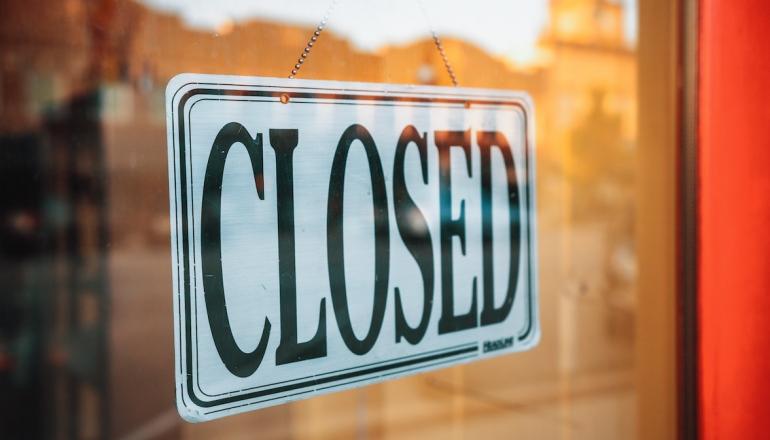The Coronavirus Job Retention Scheme (CJRS) allows employers to access a grant to cover most of the wages of their workforce who remain on the payroll but are on furlough due to the coronavirus outbreak.
UK workers of any employer who are placed on the CJRS can keep their job, with the government paying up to 80% of a worker’s salary or wage, up to a total of £2,500 per worker each month.
The Coronavirus Job Retention Scheme, originally open for three months and backdated from the 1 March 2020 to the end of May 2020, has been extended until April 2021.
Key points of the Job Retention Scheme:
- All employers are eligible for the extended Job Retention Scheme.
- As long as the employee was on the payroll at 23:59 on 30 October 2020, they can be furloughed.
- Employees do not have to have been previously furloughed to be eligible.
- Businesses will have the flexibility to bring furloughed employees back to work on a part-time basis or furlough them full-time.
- If employers fully furlough employees, the government will pay 80% of their current salary up to £2,500.
- If employers choose to flexibly furlough, the government will cover 80% of the hours not worked.
- Employers must pay all National Insurance and employer pension contributions.
- Employers will need to report and claim for a minimum period of 7 consecutive calendar days.
- Employers are still able to choose to top up employee wages above the scheme grant at their own expense if they wish.
- Claims must be submitted by 11.59 pm 14 calendar days after the month you’re claiming for e.g. claims for furlough days in December 2020 must be made by 14 January 2021.
How do I make a claim?
If you are making the claim yourself, you will need:
- your employer PAYE reference number
- the number of employees being furloughed
- National Insurance Numbers for the furloughed employees
Names of the furloughed employees - Payroll/employee number for the furloughed employees (optional)
- your Self Assessment Unique Taxpayer Reference or Corporation Tax Unique Taxpayer Reference or Company Registration Number
- the claim period (start and end date)
- amount claimed (per the minimum length of furloughing of 3 consecutive weeks)
- your bank account number and sort code
- your contact name
- your phone number
To access the portal, you will need:
- A Government Gateway ID and password
- An active PAYE enrolment
You can claim before, during or after you process your payroll as long as your claim is submitted by the relevant claim deadline. You cannot submit your claim more than 14 days before your claim period end date.
When making your claim:
- you do not have to wait until the end date of the claim period for a previous claim before making your next claim
- you can make your claim more than 14 days in advance of the pay date (for example, if you pay your employee in arrears)
If you do not finish your claim in one session, you can save a draft. You must complete your claim within seven days of starting it.
Claims must be submitted by 11.59 pm 14 calendar days after the month you’re claiming for. If this time falls on the weekend or a bank holiday then claims should be submitted on the next working day.
| Claim for furlough days in | Claim must be submitted by |
|---|---|
| November 2020 | 14 December 2020 |
| December 2020 | 14 January 2021 |
| January 2021 | 15 February 2021 |
| February 2021 | 15 March 2021 |
| March 2021 | 14 April 2021 |
| April 2021 | 14 May 2021 |
If you want to delete a claim in the online service, you must do this within 72 hours of starting it.
If we are authorised to act on for you for PAYE purposes, we will be able to make a claim on your behalf. You will just need to let us know which bank account you would like the funds to go to.
Keep hold of your claim reference number and the calculations used to work out your claim amount as this may be required by HMRC. Once HMRC has received your claim and you are eligible for the grant, they will pay it via BACS payment to a UK bank account.
HMRC will retain the right to retrospectively audit all aspects of your claim.
Is there a minimum or a maximum number of hours that I can bring employees back to work part-time?
Individual firms can decide the hours and shifts that their employees will work on their return so that it works for the companies individual needs. However, employers must agree with their employees on any new flexible furloughing arrangement and confirm that agreement in writing.
How do I work out how much I can claim for full or part-time employees? Are bonuses and commission included in the calculation?
For the period 1 November 2020 to 30 April 2021 the government grant will cover the full 80% of wages.
You must pay your employee at least 80% of their usual wages for the hours that they are furloughed and not working. This is the amount you can claim through the scheme.
The calculation of the employee’s usual wages is based on the amount they were paid in a particular period, so if their pay or working arrangements have recently changed then the amount you can claim (and the amount you must pay them for the hours not worked) may be based on the previous arrangements.
Employers will not be required to contribute to or top-up the employee’s pay for the hours not worked. You will still need to pay employer National Insurance contributions and employer pension contributions, and you cannot claim for these.
You can choose to top up your employees’ wages above the minimum 80% furlough pay amount but you do not have to. Employees must not work or provide any services for the business during hours which they are recorded as being on furlough, even if they receive a top-up wage.
If your employee is flexibly furloughed, which means they are working reduced hours rather than stopping work completely, you must pay them their full current contracted rate for any hours they work. You cannot claim a grant for the hours the employee works.
This calculator can be used to work out what you can claim. It can be used for most employees who are paid either regular or variable amounts each pay period (for example, weekly or monthly).
The amount you should use when calculating 80% of your employees’ wages for hours not worked, is made up of the regular payments you are obliged to make, including:
- regular wages you paid to employees
- non-discretionary payments for hours worked, including overtime
- non-discretionary fees
- non-discretionary commission payments
- piece rate payments
You cannot include the following when calculating wages:
- payments made at the discretion of the employer or a client – where the employer or client was under no contractual obligation to pay, including:
- any tips, including those distributed through troncs
- discretionary bonuses
- discretionary commission payments
- non-cash payments
- non-monetary benefits like benefits in kind (such as a company car), including benefits received in exchange for giving up an amount of pay under a salary sacrifice scheme
- employer pension contributions, including pension contributions received in exchange for giving up an amount of pay under a salary sacrifice scheme (you can still include pension contributions that the employee makes from their wages, such as through a Net Pay Arrangement pension scheme)
- amounts of pay given up under a salary sacrifice scheme
My employee is on a flexible contract and their pay varies. How do I work out their entitlement?
Depending on how long the employee has been employed by the company, there are various options to work out how much you can claim whilst they are furloughed.
- If the employee has been employed for a full twelve months prior to the claim, you can claim for the higher of either the same month’s earnings from the previous year or the average monthly earnings for the year.
- If the employee has been employed for less than a year, claim for an average of their monthly earnings since they started work.
- If the employee only started in February 2020, use a pro-rata for their earnings so far to claim.
I have an employee on a fixed-term contract, can I furlough them?
Furloughed employees can be on any type of contract, including those on fixed-term contracts, agency contracts, or flexible and zero-hour contracts.
Employees on fixed-term contracts can also have these contracts extended or renewed during the period of furlough. It is important to note that, if the contract ends and is not extended or renewed, employers will not be able to claim a grant for them.
The following groups can also be furloughed, as long as they are paid via PAYE.
- office holders (including company directors)
- salaried members of Limited Liability Partnerships (LLPs)
- limb (b) workers (i.e. a worker in the gig economy)
How long will it take to receive the funds?
Once a claim has been submitted, the funds should reach the designated bank account six working days later.
Can an employee work for another company whilst furloughed?
If an employee has a second job, each job is independent of one another therefore they can be furloughed for one and continue to undertake work for another. However, they must not be in breach of their current employment contract with your organisation.
Can employees volunteer during their furloughed leave, for example for the NHS?
An employee can volunteer as long as the volunteering that they undertake does not:
- generate any revenue for your organisation
- provide your organisation with any services.
For example, an employee of a charity, whilst furloughed, can volunteer under the NHS Volunteer Responder scheme, but cannot work, free of charge, for the charity that employs them.
My employee is refusing to be furloughed, can I enforce it anyway?
As furloughing requires changes to be made to an employment contract, you cannot enforce these changes without agreeing with the employee beforehand. Employers may need to seek legal advice on the furloughing process to avoid any breaches to employment law.
Can I furlough an employee while they are on sick leave and self-isolating?
You cannot furlough an employee whilst on sick leave or self-isolating – at this point, they are entitled to Statutory Sick Pay. However, once this period is over, they can be furloughed.
Employees who are shielding, a practice used to protect extremely vulnerable people from coming into contact with coronavirus, can be placed on furlough.
As an employer, are we still expected to pay National Insurance and pension contributions for each employee?
Yes, you must pay the associated employee tax and National Insurance contributions to HMRC, even if your company is in administration. If you’re not able to do that, you’ll need to repay the money back to HMRC.
Can we delay making payments to furloughed employees until we have received funds from HMRC under the scheme?
We would strongly advise against doing this as doing so will likely breach any employment contract that is in place. If you are struggling to pay employees due to short-term cash flow issues, we would recommend looking into other funding options to help, for example, the Coronavirus Business Interruption Loan Scheme.
I am a director of a company. Can I be furloughed?
There have been many calls for clearer guidance from the government on this topic as it hasn’t been addressed in any of the government’s daily briefings. During the CBI webinar on 27 March, Ben Kerry from HMRC confirmed that a Director can furlough themselves and still carry out statutory duties while on furlough. Any other work, other than statutory duties, would be considered working and therefore be in breach of the scheme.
It has also been confirmed that the amount that can be claimed is limited to the salary, meaning any dividends that were previously voted and paid are not included in this calculation.
When furloughing company directors and salaried members of LLPs, HMRC’s advice is for the company/LLP to formally advise the Director/salaried partner via written communication.
If my business uses contractors, can I furlough them?
If you engage the services of external contractors, they will not be eligible to be furloughed as they are not employees on your payroll. The contractors should take their own advice as to what support is available to them, depending upon whether they operate through a limited company or are self-employed.
Can I still claim the Job Retention Bonus?
The Job Retention Bonus, a £1,000 one-off taxable payment to the employer for each eligible employee that had been furloughed and kept continuously employed, will no longer be paid, as the Coronavirus Job Retention Scheme has been extended until the end of April 2021. It is thought that the Job Retention Bonus will be replaced with a new “retention incentive” that would be announced at an “appropriate time”.
For further guidance or help on furloughing employees, contact Helen Coombes on [email protected].














